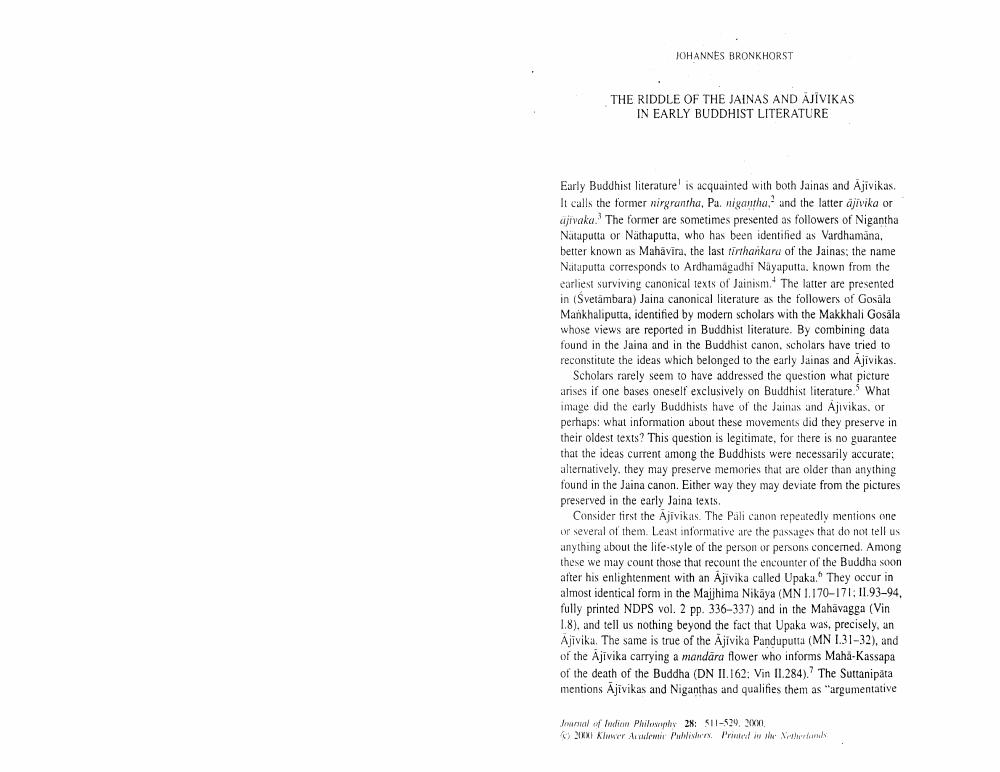Book Title: Riddle Of Jainas And Ajivikas In Early Buddhist Literature Author(s): Johannes Bronkhorst Publisher: Johannes Bronkhorst View full book textPage 1
________________ JOHANNES BRONKHORST THE RIDDLE OF THE JAINAS AND AJIVIKAS IN EARLY BUDDHIST LITERATURE Early Buddhist literature is acquainted with both Jainas and Ajivikas. It calls the former nirgruntha, Panigantha." and the latter ajivika or ajrvaka. The former are sometimes presented as followers of Nigantha Nataputta or Nathaputta, who has been identified as Vardhamana. better known as Mahavira, the last tirthankare of the Jainas: the name Nataputta corresponds to Ardhamagadhi Nayaputta, known from the earliest surviving canonical texts of Jainism. The latter are presented in (Svetambara) Jaina canonical literature as the followers of Gosala Mankhaliputta, identified by modern scholars with the Makkhali Gosala whose views are reported in Buddhist literature. By combining data found in the Jaina and in the Buddhist canon, scholars have tried to reconstitute the ideas which belonged to the early Jainas and Ajivikas. Scholars rarely seem to have addressed the question what picture anses if one bases oneself exclusively on Buddhist literature. What image did the early Buddhists have of the Jainas and Ajivikas. or perhaps: what information about these movements did they preserve in their oldest texts? This question is legitimate, for there is no guarantee that the ideas current among the Buddhists were necessarily accurate: alternatively, they may preserve memories that are older than anything found in the Jaina canon. Either way they may deviate from the pictures preserved in the early Jaina lexis. Consider first the Ajivikas. The Pali canon repeatedly mentions one or several of them. Least informative are the passages that do not tell us anything about the life style of the person or persons concerned. Among these we may count those that recount the encounter of the Buddha soon after his enlightenment with an Ajivika called Upaka. They occur in almost identical form in the Majjhima Nikāya (MN 1.170-171:11.93-94. fully printed NDPS vol. 2 pp. 336-337) and in the Mahāvagga (Vin 1.8), and tell us nothing beyond the fact that Upaka was, precisely, an Ajivika. The same is true of the Ajivika Panduputta (MN 1.31-32), and of the Ajivika carrying a mandāra flower who informs Maha Kassapa of the death of the Buddha (DN II.162: Vin II.284). The Suttanipata mentions Ājivikas and Niganthas and qualifies them as "argumentative Iran Indian Philly 28: SI1-529. NANI CKX Kwer Andet wird in eenPage Navigation
1 2 3 4 5 6 7 8 9 10
